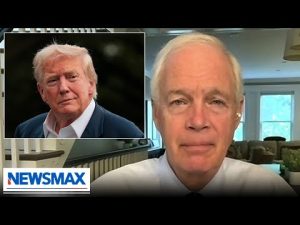In a bold move that could shake up international trade and relations, the United States is preparing to reinstate what are known as reciprocal tariffs on countries that fail to reach new trade agreements by a strict deadline this Friday. President Donald Trump has made it clear that there will be no further extensions on these tariffs, which he initially introduced back in April, during what he dubbed “Liberation Day.” This day was supposed to usher in a new era of trade where the U.S. would implement hefty tariffs on most of its trading partners, starting at a baseline rate of 10%.
Initially, President Trump announced these tariffs would take effect on April 9, but recognizing the complexities of international negotiations, he decided to pause them for 90 days. This pause was designed to give countries a fair chance to negotiate new deals with the U.S., with a lofty goal of finalizing 90 trade agreements in just 90 days. However, as the deadline draws near, it’s becoming clear that the U.S. has not quite hit that ambitious mark, managing to only outline frameworks for agreements with select nations including the European Union, the United Kingdom, Vietnam, Japan, the Philippines, and Indonesia. Rates for these deals appear to be climbing, typically hovering between 15% and 20%.
Trump has reiterated that the August 1st deadline is non-negotiable, emphasizing that the U.S. will not entertain any extensions for those who have not reached agreements. This categorical stance signals a robust commitment to enforcing tariffs as a means of compelling nations to the negotiating table. As he stated in a Truth Social post, the President seems firm in his decision-making—making it clear that he intends to hold countries accountable, and not just with a light tap on the wrist.
In a more specific target, India stands out as a country facing a significant penalty, as Trump has threatened to implement a staggering 25% tariff against them. This comes after labeling India’s trade barriers as some of the most strenuous and obnoxious in the world. On top of that, the U.S. administration is not happy about India’s procurement of military equipment from Russia, especially during a time of heightened tensions surrounding the conflict in Ukraine. The President has underscored that countries supporting Russia’s military endeavors via purchases will face dire consequences.
Additionally, the President has leveled a stern warning at nations buying Russian oil and gas. If Russia doesn’t come to a ceasefire agreement by August 8th, Trump has hinted at a punitive 100% tariff on these countries. With major oil purchases coming from India and China, this situation is a high-stakes game of international chess, with the U.S. positioning itself as a powerful player willing to shake things up for compliance.
As the clock ticks down to Friday, the world watches closely. There’s no doubt that these tariffs hold significant implications for global trade and the delicate relationships between nations. The decisions stemming from this deadline will set the tone for the future of trade negotiations and could potentially impact economic conditions worldwide. A lot is riding on these negotiations, and only time will tell how this complex and often contentious puzzle will unfold.







